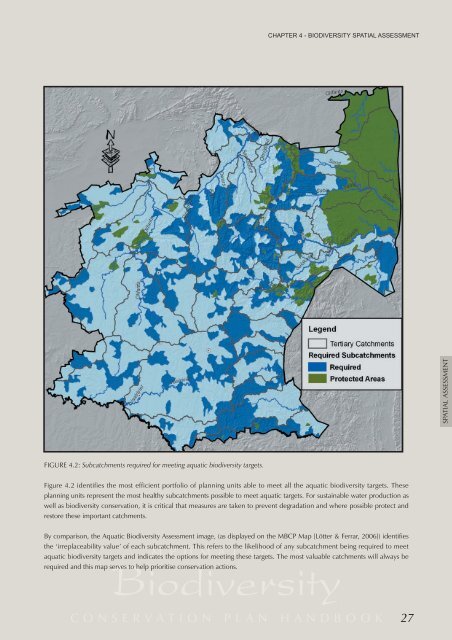Mpumalanga Biodiversity Conservation Plan Handbook - bgis-sanbi
Mpumalanga Biodiversity Conservation Plan Handbook - bgis-sanbi
Mpumalanga Biodiversity Conservation Plan Handbook - bgis-sanbi
Create successful ePaper yourself
Turn your PDF publications into a flip-book with our unique Google optimized e-Paper software.
FIGURE 4.2: Subcatchments required for meeting aquatic biodiversity targets.<br />
Figure 4.2 identifies the most efficient portfolio of planning units able to meet all the aquatic biodiversity targets. These<br />
planning units represent the most healthy subcatchments possible to meet aquatic targets. For sustainable water production as<br />
well as biodiversity conservation, it is critical that measures are taken to prevent degradation and where possible protect and<br />
restore these important catchments.<br />
By comparison, the Aquatic <strong>Biodiversity</strong> Assessment image, (as displayed on the MBCP Map [Lötter & Ferrar, 2006]) identifies<br />
the ‘irreplaceability value’ of each subcatchment. This refers to the likelihood of any subcatchment being required to meet<br />
M P U M A L A N G A<br />
aquatic biodiversity targets and indicates the options for meeting these targets. The most valuable catchments will always be<br />
<strong>Biodiversity</strong><br />
required and this map serves to help prioritise conservation actions.<br />
CHAPTER 4 - BIODIVERSITY SPATIAL ASSESSMENT<br />
CONSERVATION PLAN HANDBOOK 27<br />
SPATIAL ASSESSMENT

















